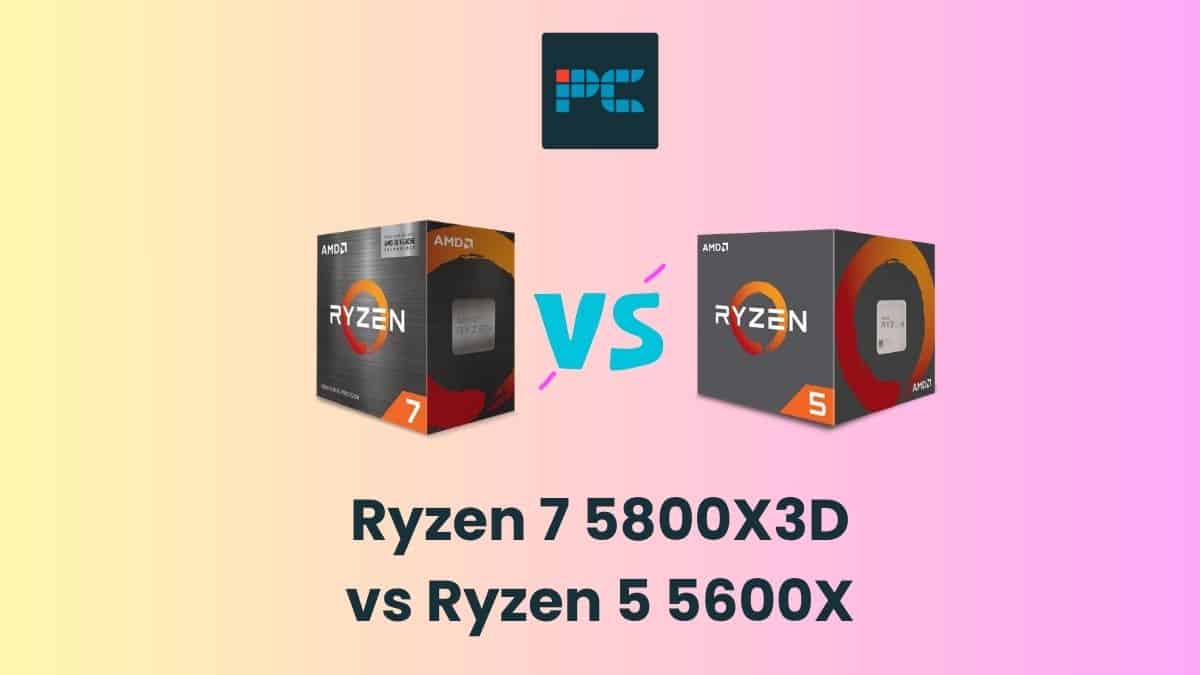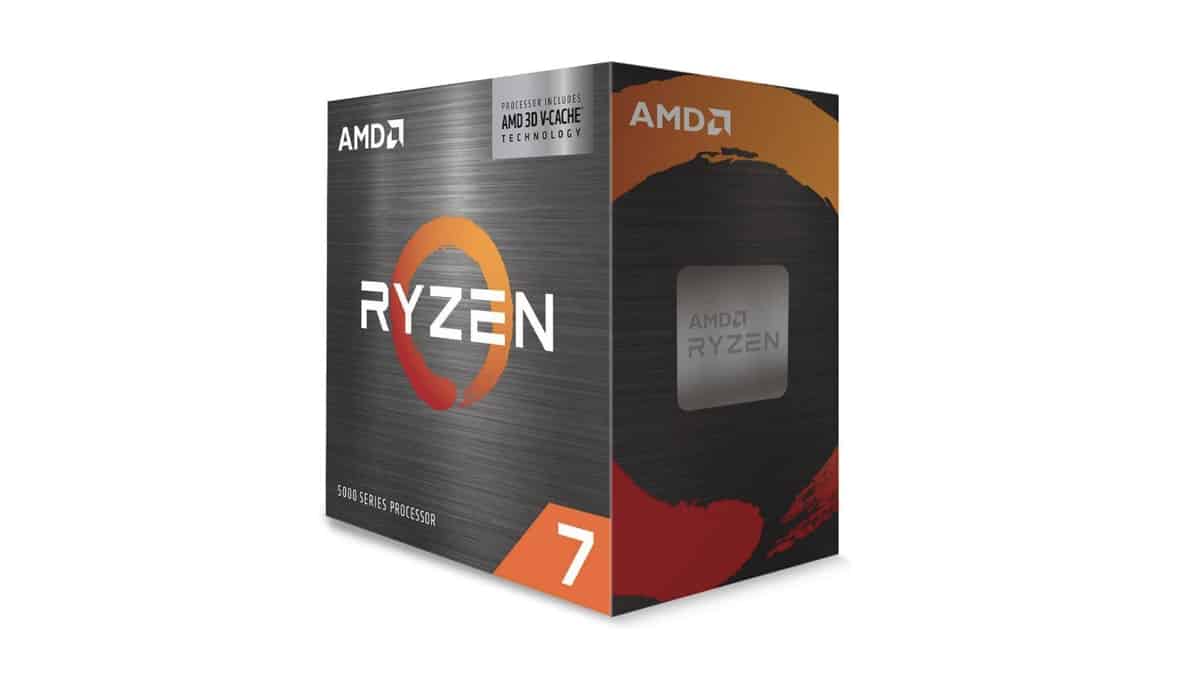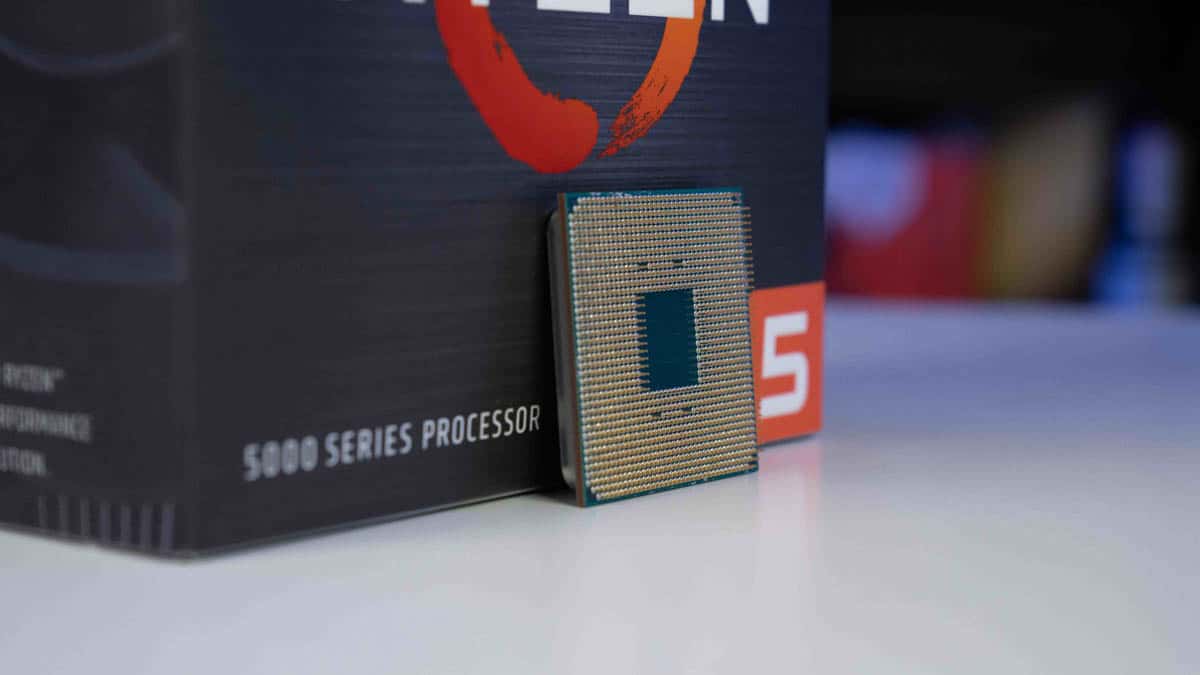Ryzen 7 5800X3D vs Ryzen 5 5600X – which should you get?

Table of Contents
When it comes to choosing between the Ryzen 7 5800X3D vs Ryzen 5 5600X, users are faced with a decision between two of AMD's popular CPUs, each catering to different segments of the PC market. This comparison aims to dissect the differences between these two processors to help you determine which one aligns better with your computing needs.
The Ryzen 7 5800X3D, known for its enhanced gaming performance, stands against the Ryzen 5 5600X, a well-rounded CPU offering great value for money. In this article, we’ll compare their specs, analyze performance benchmarks, consider their price points, and conclude with a recommendation based on typical user scenarios.
Prime Day is finally here! Find all the biggest tech and PC deals below.
- Sapphire 11348-03-20G Pulse AMD Radeon™ RX 9070 XT Was $779 Now $739
- AMD Ryzen 7 7800X3D 8-Core, 16-Thread Desktop Processor Was $449 Now $341
- ASUS RTX™ 5060 OC Edition Graphics Card Was $379 Now $339
- LG 77-Inch Class OLED evo AI 4K C5 Series Smart TV Was $3,696 Now $2,796
- Intel® Core™ i7-14700K New Gaming Desktop Was $320.99 Now $274
- Lexar 2TB NM1090 w/HeatSink SSD PCIe Gen5x4 NVMe M.2 Was $281.97 Now $214.98
- Apple Watch Series 10 GPS + Cellular 42mm case Smartwatch Was $499.99 Now $379.99
- ASUS ROG Strix G16 (2025) 16" FHD, RTX 5060 gaming laptop Was $1,499.99 Now $1,274.99
- Apple iPad mini (A17 Pro): Apple Intelligence Was $499.99 Now $379.99
*Prices and savings subject to change. Click through to get the current prices.
Ryzen 7 5800X3D vs Ryzen 5 5600X: Specs
In the battle of specs between the Ryzen 7 5800X3D and the Ryzen 5 5600X, one of the most significant differentiators is the cache size, specifically the L3 cache. The Ryzen 7 5800X3D boasts an impressive 96 MB of L3 cache, a substantial increase compared to the Ryzen 5 5600X’s 32 MB.
This larger cache in the 5800X3D plays a crucial role in enhancing gaming performance, as the system’s main memory allows for more rapid data access and storage – a critical factor in modern gaming where quick retrieval of game assets can dramatically affect performance.
Beyond the cache, both CPUs share the same 7nm TSMC lithography, but they differ in core counts and clock speeds. The Ryzen 7 5800X3D comes equipped with 8 cores and 16 threads, whereas the Ryzen 5 5600X features 6 cores and 12 threads.
| Specs | Ryzen 7 5800X3D | Ryzen 5 5600X |
|---|---|---|
| Cores/Threads | 8/16 | 6/12 |
| Base Clock | 3.4 GHz | 3.7 GHz |
| Boost Clock | 4.5 GHz | 4.6 GHz |
| Lithography | 7 nm TSMC | 7 nm TSMC |
| TDP | 105W | 65W |
| Cache L3 | 96 MB | 32 MB |
| MSRP | $449 | $299 |
Although their base and boost clocks are relatively close, the Ryzen 7 5800X3D has a slightly lower base clock of 3.4 GHz compared to the 5600X's 3.7 GHz. In turbo mode, these maximum frequencies rise to 4.6GHz and 4.5GHZ respectively. However, this difference in working speed of a processor is more than offset by the 5800X3D’s larger cache (96 GB of memory), which enhances overall performance, particularly in scenarios where quick data processing is paramount. Neither cPU comes with internal graphics, so you will need to rig it up to a GPU to optimize FPS and depth of color.
Another aspect to consider is the Thermal Design Power (TDP), which specifies the necessary cooling solution for the processor. Both CPUs have a similar TDP, with the 5800X3D rated at 105W, aligning with the 5600X. This similarity in power consumption means that despite the 5800X3D’s additional cache and CPU cores, it doesn’t require significantly more power, making it an efficient choice for users who are conscious of energy consumption and heat output.
Ryzen 7 5800X3D vs Ryzen 5 5600X: Performance
The Ryzen 7 5800X3D excels in gaming due to its larger cache, which helps in faster data access that many modern games benefit from. Technical data for the hardware benchmark results typically shows the 5800X3D outperforming the 5600X in most high-resolution gaming scenarios, providing smoother gameplay and higher frame rates.
However, for general productivity and multi-threaded tasks, the difference might not be as pronounced. The Ryzen 5 5600X, with its fab power efficiency and adequate core count, offers solid performance for everyday computing and lighter content creation workloads. Its lower TDP also suggests better thermal management, which can be a consideration for users with limited cooling solutions.
In applications that heavily utilize CPU resources, such as video processing or software compiling, the 5800X3D’s additional cores and larger cache give it an edge and slightly better performance. However, for average users or those on a budget, the performance of the 5600X is often more than sufficient. Both have a decent support of artificial intelligence (AI) algorithms, making them solid options for machine learning tasks.
Ryzen 7 5800X3D vs Ryzen 5 5600X: Price
Pricing is a crucial factor in this comparison. The Ryzen 7 5800X3D, positioned as a high-end gaming CPU, comes with a higher price tag than the Ryzen 5 5600X. The latter offers great value for its price, making it an attractive option for budget-conscious users or those with moderate computing needs.
Considering the total cost of ownership, the 5800X3D might also entail additional expenses in terms of more robust cooling solutions or higher-end motherboards to leverage its full potential. In contrast, the 5600X, with its lower power requirements, can be a more economical choice not just in terms of initial purchase but also in ongoing power consumption and cooling needs.
Conclusion
The performance difference between these two cards is fairly sharp. Definitively, the Ryzen 7 5800X3D stands out as the superior choice in this comparison. It transcends beyond just gaming prowess, establishing itself as the better all-around CPU even when considering productivity tasks.
For users deliberating between these two CPUs, the Ryzen 7 5800X3D offers a more comprehensive package. Its advantages in cache size and core count translate into tangible performance benefits that justify its selection over the Ryzen 5 5600X.



